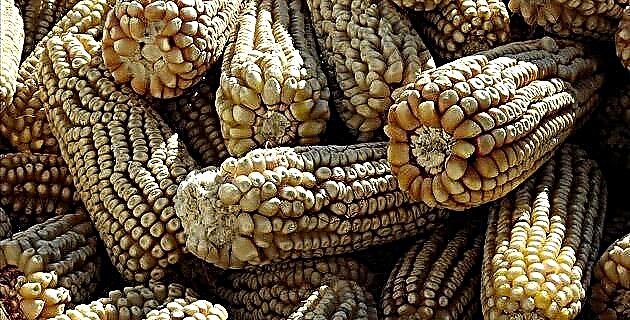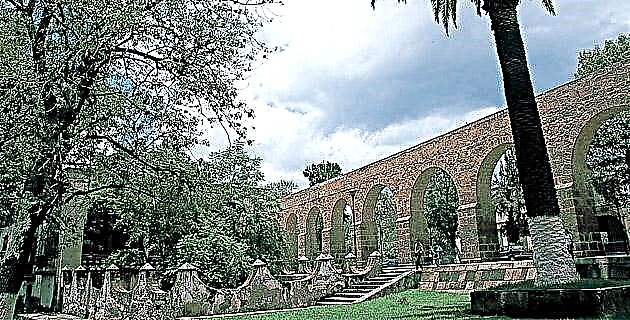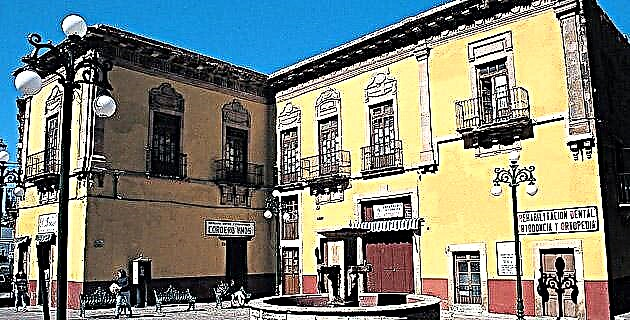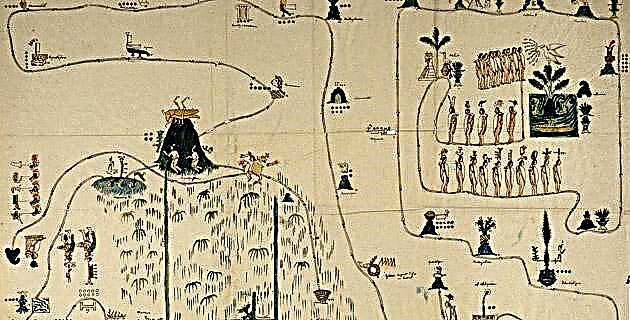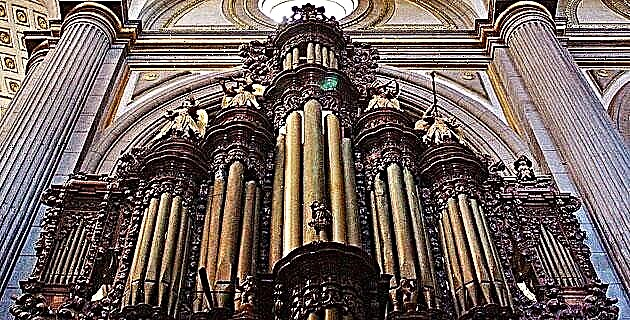
The extraordinary heritage of Mexican baroque organs is, without a doubt, one of the most eloquent treasures in the history of art and universal organism.
The arrival in Mexico of Hernán Cortés in the 16th century marks a new stage in the development of music and the arts in general, emerging a new art: the organizer. From the beginning of the Colony, the new musical system implemented by the Spanish and transformed by the sensitivity of the Mexicans would form a fundamental part in the evolution of the musical endeavor in Mexico. The first bishop of Mexico, Fray Juan de Zumárraga, was in charge of giving precise instructions to the missionaries for the teaching of music and for using it as a fundamental element in the conversion process of the natives. Ten years after the fall of Tenochtitlan, an organ was imported from Seville, in 1530, to accompany the choir that Fray Pedro de Cante, who was by a certain cousin of Carlos V, had under tutelage in Texcoco.
The demand for organs increased towards the end of the 16th century, due to the efforts of the secular clergy to limit the number of instrumentalists. This attitude of the clergy coincided with an important reform of music at the service of the Spanish church, as a consequence of the resolutions of the Council of Trent (1543-1563) resulting in Philip II excluding all the instruments from the Royal Chapel with the exception of the organ.
It is remarkable the fact that before New York, Boston and Philadelphia were constituted as colonies, the King of Spain had already proclaimed an edict in 1561 prohibiting the excessive number of indigenous musicians employed in Mexican churches, “… otherwise the church would go bankrupt… ”.
The construction of organs flourished in Mexico from very early times and with a high level of quality in its manufacture. In 1568, the city council of Mexico City proclaimed a municipal edict in which it was stated: “… an instrument maker must show through an examination that he is capable of building the organ, the spinet, the manocordio, the lute, the different types of violas and the harp ... every four months an officer would examine the instruments made and confiscate all those that lacked a high level of quality in workmanship ... ”Through the musical history of Mexico, it is possible to verify how the Organ played a very important role since the origins of the Colony, and that the splendor of Mexican organism continued even during the most turbulent periods of Mexican history, including the period of independence in the 19th century.
The national territory has an extensive heritage of Baroque organs built mainly during the 17th and 18th centuries, but there are magnificent instruments dating from the 19th century and even at the beginning of the 20th, manufactured in accordance with the principles of organ art that prevailed during Spanish rule. . It is worth mentioning at this point the Castro dynasty, the family of Puebla organ makers that had the greatest influence in the Puebla and Tlaxcala region in the 18th and 19th centuries, with the manufacture of very high quality organs, comparable to the most select European production. of his time.
It can be said, as a general rule, that the Mexican organs preserved the characteristics of the classical Spanish organ of the 17th century, transcending them with a marked autochthonous character that identify and characterize the notable Mexican organism in a universal context.
Some characteristics of Mexican baroque organs can be explained in general terms as follows:
The instruments are commonly of medium size and with a single keyboard with four octaves of extension, they have 8 to 12 registers divided into two halves: bass and treble. The registers used in its phonic-musical composition are of a great variety, in order to guarantee certain acoustic effects and contrasts.
The reed registers placed horizontally on the façade are practically unavoidable and have a great color, these are found even in the smallest organs. The organ boxes are of great artistic and architectural interest, and the façade flutes are frequently painted with floral motifs and grotesque masks.
These instruments have some special effects or accessory registers commonly called birds, drums, bells, bells, siren, etc. The first one consists of a set of small flutes submerged in a container with water, when triggered it imitates the chirps of birds. The bell register is made up of a series of bells struck by small hammers placed on a rotating wheel.
The placement of the organs varies according to the type of architecture of the churches, parishes or cathedrals. In a general way, we can speak of three periods in the development of religious architecture during the colonial period, between 1521 and 1810. Each of these stages influenced musical customs and consequently the placement of organs on the architectural plane.
The first period covers from 1530 to 1580 and corresponds to the construction of convents or monastic establishments, in which case the choir is located in a gallery above the main entrance of the temple, the organ is frequently located in a small gallery extended to one side. of the choir, a classic example would be the placement of the organ in Yanhuitlán, Oaxaca.
During the 17th century we found a boom in the construction of great cathedrals (1630-1680), with a central choir usually with two organs, one on the gospel side and the other on the epistle side, such is the case of cathedrals. from Mexico City and Puebla. In the 18th century the emergence of parishes and basilicas occurred, in which case we find again the organ in the upper choir above the main entrance, generally attached to the north or south wall. Some exceptions are the church of Santa Prisca in Taxco, Guerrero or the church of the Congregation, in the city of Querétaro, in which case the organ is located in the upper choir, facing the altar.
During the colonial era and even in the 19th century there was a great proliferation of professional organism, construction and workshops in Mexico. instrument maintenance was a regular activity. At the end of the 19th century and especially in the 20th century, Mexico began to import organs from various countries, mainly from Germany and Italy. On the other hand, the empire of electronic organs (electrophones) began to spread, so the art of organism declined dramatically, and with it the maintenance of existing organs. The problem with the introduction in Mexico of electric organs (industrial organs) is that it created a whole generation of industrial organists, which caused a break with the practices and techniques of execution typical of baroque organs.
Interest in the study and conservation of historical organs arises as a logical consequence of the rediscovery of early music in Europe, this movement can be placed approximately between the fifties and sixties of this century, arousing great interest in musicians, organists, artists and musicologists of all the world. However, in Mexico until very recently we have begun to focus our attention on various problems related to the use, preservation, and revaluation of this heritage.
Today, the world trend to preserve an ancient organ is to approach it with archaeological, historical-philological rigor and return it to its original state in order to rescue a classic and authentic instrument of its time, since each organ is one, entity in itself, and therefore, a unique, unrepeatable piece.
Each organ is an important witness of history through which it is possible to rediscover an important part of our artistic and cultural past. It is sad to say that we are still confronted with some restorations sometimes misnamed that way, because they are limited to "making them ring", they become real reforms, or often irreversible alterations. It is necessary to avoid that amateur organism, well-intentioned, but without professional training, continue to intervene historical instruments.
It is a fact that the restoration of ancient organs must also imply the restoration of manual, artistic and artisan skills of Mexicans in the field of organism, this being the only way to guarantee the preservation and maintenance of the instruments. Likewise, musical practice and the proper use of them must be restored. The issue of preserving this heritage in Mexico is recent and complex. For decades, these instruments remained in neglect due to lack of interest and resources, which to some extent was favorable, as many of them remain intact. The organs constitute a fascinating documentation of the art and culture of Mexico.
The Mexican Academy of Ancient Music for Organ, founded in 1990, is a specialized organization in the study, preservation and revaluation of the heritage of Mexican baroque organs. Annually it organizes international academies of ancient music for organ as well as the Baroque Organ Festival. He is responsible for the first organism dissemination magazine in Mexico. Its members actively participate in concerts, conferences, recordings, etc. of Mexican colonial music.



